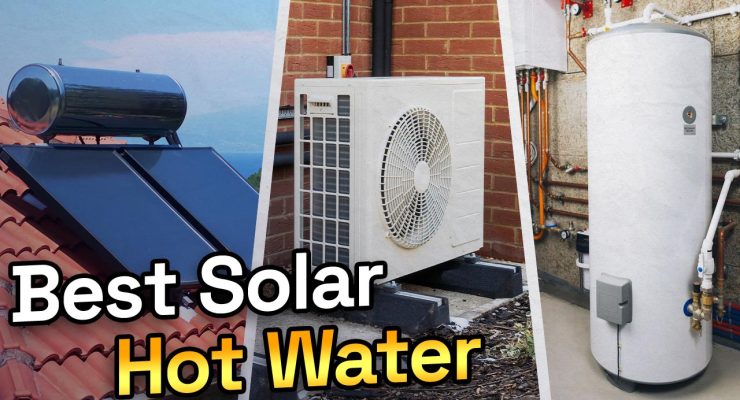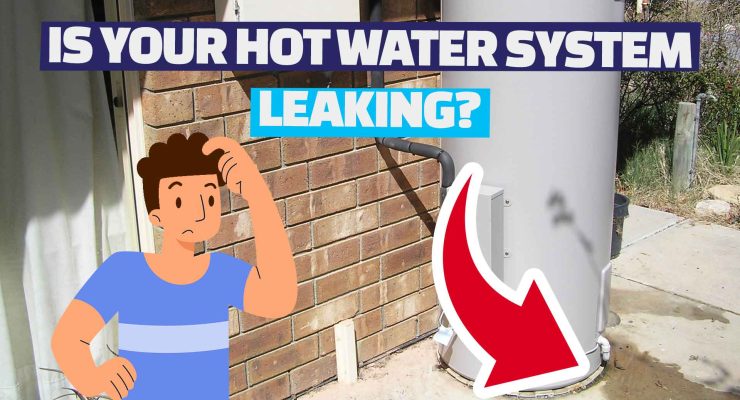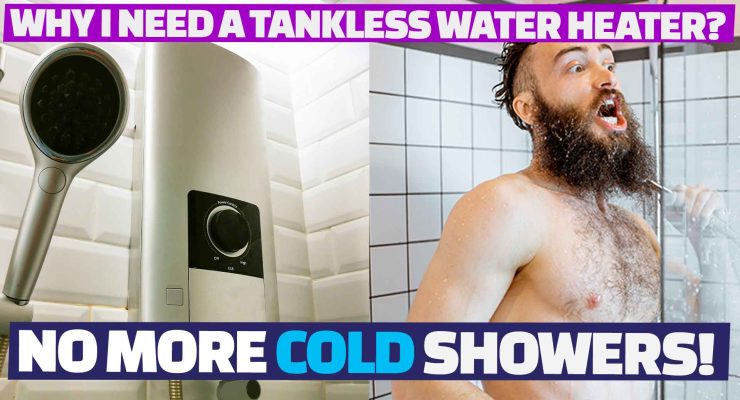Fast read
Water may be heated for a reasonable price by heat pumps and solar hot water systems for homes. They comprise a heat pump unit, tank, solar collection panels, and storage tank.
A medium to large solar hot water system can start at $4000, and a quality heat pump at a similar price point. Rebates can affect this pricing.
Even though this may seem pricey, homeowners often experience a 50% reduction in hot water bills, for example, compared to a gas hot water storage heater. Therefore over time, these environmentally friendly solutions can save money.
Obtaining quotations from dependable local vendors and assessing your property is crucial to choosing the right sized hot water system for your requirements. Also crucial to consider is the maintenance and installation process, which a knowledgeable installation crew may complete in a single day.
With so many hot water systems on the market; which one is right for me?
A wise investment for homeowners is an electric heat pump hot water system or solar hot water system. However, the initial expense is higher than, let’s say, the replacement of an existing hot water electric tank. So this higher cost could deter you.
Also, the old-fashioned electric hot water tank could be an option. For example, if you have a solar PV system, send the excess solar electricity into the tank before exporting it. In that case, your electric tank becomes your most affordable electricity storage “battery”.
Getting a good deal
To ensure you get the ideal solar hot water system, use the information below as a guide before you even decide on the technology. But, first, have at our key points: guiding your hot water system purchase.
- Which technology is best for you – electric storage tank, heat pump, and tank, or solar hot water? The days of gas are slowly ending, even though some gas hot water systems are compact and immediate. The running costs of those in future years are most likely to reduce the popularity of this technology.
Each hot water type has its advantages and disadvantages. So, please look at our information below to choose the solution that suits your needs and budget.
- Size of the tank – the size of your solar hot water system obviously should match the number of people in your household and the amount of hot water used. For example, 250l and less is for small households, around 300l is for medium households, e.g. 3-4 people, and a 400l tank is for large families.
- Keep an eye on the energy use of your purchased system and compare them. For example, different manufacturers’ heat pumps come with varying consumption patterns. This can have a significant long-term effect on your future energy bills. Also, while solar hot water is heated by the sun, ensure nothing overshadows the system—especially early morning and late afternoons when shadows are longer.
Changing the hot water system technology can be expensive
- Solar hot water systems can be expensive, and usually, they get installed in a hurry. On the other hand, no one wants to be without hot water for long periods. Therefore, the system’s initial cost can vary greatly, and a straight replacement is often the cheapest option. But withstand that temptation if there are better long-term solutions available. Especially if you can get the higher initial expenditure back via savings in the future running costs.
- Pick a reputable manufacturer with a good record in after-sales service and producing durable hot water systems. Research customer reviews on the particular product online before making a final decision.
- The length of the product warranty and the installation warranty can influence your decision.
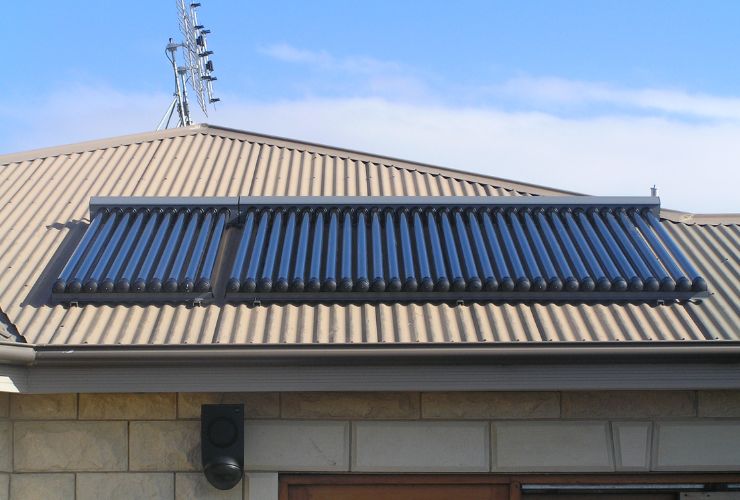
How much does a solar hot water system or heat pump cost?
The price of solar hot water systems and heat pumps varies depending on the system size you need. Generally, these systems range from $4000 to $5000, including installation. Some Government rebates are available.
While this is an expensive upfront cost, homeowners find that their hot water costs decrease by more than 50%. This means that you will get a return on investment over time.
The exact time it takes to make your money back depends on factors such as how much hot water you use, what HW technology you were using prior, existing infrastructure that can be reused, and the size of the system. The general idea is that an annual saving of $500 to $600 for a medium household can be achieved.
This means ROI for the difference of around 5 to 6 years. Solar hot water systems have been known to last between 12 to 20 years, and heat pumps 10 to 15 years in the Australian and New Zealand climate.
Solar hot water system – Advantages
Before rushing out to purchase one, you should first comprehend what a solar hot water system is. These systems consist of a storage tank and solar collector panels. The typical four-person family requires a 300-360 L tank and around 4 m2 or roof collector area. Collectors can be square metal panels with a glass surface or evacuated tubes like in the photo below.
Heat is transferred to the tank by the collectors using the sun’s beams until it reaches the tank’s maximum stored temperature. Most tanks also include an electrically driven booster as a backup heating technology.
Two types of solar hot water are available. The one with a tank on the roof – is often limited to around 180 to 250 litres, or a tank on the side of the house and collectors on the roof. These side-of-the-house tanks can be as large as 400 litres and could serve a 6-person household. Instead of 2 collectors, one could consider more collectors on the roof to heat the water faster.
A solar hot water system’s specific advantage is that it is environmentally friendly as it uses sun rays to heat water. While initially costing $4000 plus to install, they can be cost-effective in regions with lots of sunshine. This is because they do not require much electricity to heat the water.
The systems have an electric booster in case of overcast and rainy days. So if one has a shady roof or is in a less sunny region, solar hot water may not be the right technology.
Disadvantages
Also, some distinct disadvantages exist. Such include the initial high cost of installation, the occupation of valuable roof real estate that is not available for solar electric PV panels and the visual aspects of a panel and tank system on a roof that some people find ugly. Also, in areas where there are below 0-degree temperatures. Standard solar hot water systems can be damaged when pipes freeze.
Heat pump systems – Advantages and disadvantages
Heat pumps that work like a refrigerator, only in reverse, are becoming increasingly popular as they offer an excellent energy-efficient way to heat hot water, especially for owners of solar PV systems that provide one of the most financially attractive options to heat water.
A heat pump hot water system transfers heat from one area to bring the air to another, rather than using heating coils to heat the water directly. Heat Pumps, like air-conditioners, need a refrigerant and a compressor to move the heat from the air around the home to heat the water in the tank. The specific technical steps are:
- The heat pump sucks in the air (it can even work with colder air), absorbs the heat in the air, and then, via the evaporator, moves this heat into the refrigerant.
- While passing through the compressor, the refrigerant changes its properties from fluid to hot gas as it vaporises.
- The hot gas enters the condenser, transferring the heat from the refrigerant into the water collected in the hot water tank.
- As the refrigerant loses the heat, it changes into a fluid, returns to the evaporator and the whole cycle starts again.
- Modern heat pumps, such as Reclaim – which uses more environmentally friendly CO2 as a refrigerant, are highly efficient. In addition, their electricity consumption is much lower than traditional electric hot water tanks, as most of the heat comes from the existing heat in the air.
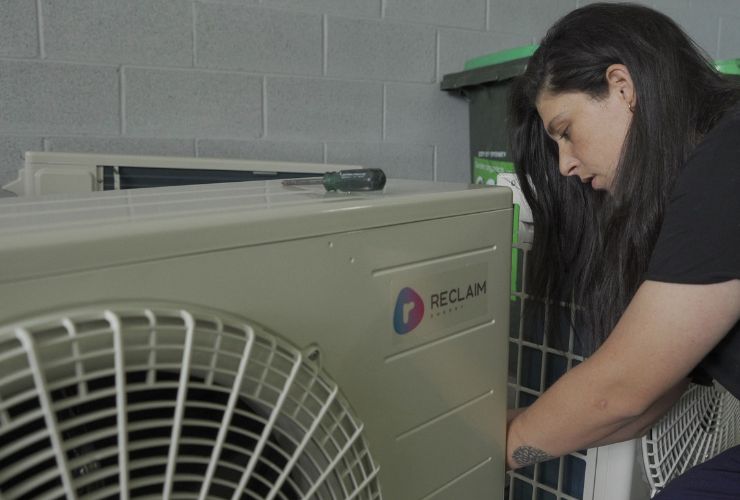
Heat Pump benefits
The benefits of a heat pump HW system include that they are highly efficient, even in cool climates. They are an excellent option for areas with limited sunshine. While in price similar to a solar hot water system, they can be extremely cost-effective in the long run with a solid 5-6 year ROI.
The initial installation cost of heat pumps can be a deterrent, depending on the climate. If one has a solar PV system, they may not be as environmentally friendly as solar hot water systems, as they still rely on electricity to run.
Ultimately, the choice between the two best options, the solar hot water system and a heat pump system, will depend on your specific circumstances. We recommend the input and advice of a professional hot water company to determine the best option for you.
Getting a quote
To make sure you purchase the best hot water system option, the next step is to obtain a competitive quote. To locate the greatest offer, contact reliable installers and feel free to use our installer finder.
The installer’s visit to your home to evaluate what is needed should include a short check of the area where the unit, panels and tank need to be installed. Do not waste this opportunity to move the tank to a more convenient position if the layout surrounding your home has changed.
Make sure you ask about available rebates, how long installation would take if all parts are available and if all waste is being removed as part of the job.
On the other hand, the installer should also question you. For example, you may have cause for concern if they fail to enquire about how many people reside in your home or if you have solar PV.
What size solar hot water system should you get?
Knowing what size tank you require is the last step to getting the ideal system. If you get a tank that is too small, you risk running out of hot water, and if you choose a tank that is too large, you risk overspending and experiencing a lengthier payback period.
Finding your water use patterns is the most effective technique to determine the size tank you require. First, choose how much hot water you consume daily by checking your water meter or contacting your water provider. The tank size you should purchase is determined by this amount plus an additional 10–20%. Your installer can supply you with a general guide and recommendations.
A general principle you can use if you cannot find this information. You can generally abide by 50 to 60l of hot water per person daily. This implies that you can suppose you use 200 to 240l per day if four people live in your home. As a result, you ought to consider purchasing a 250 or 300l tank.
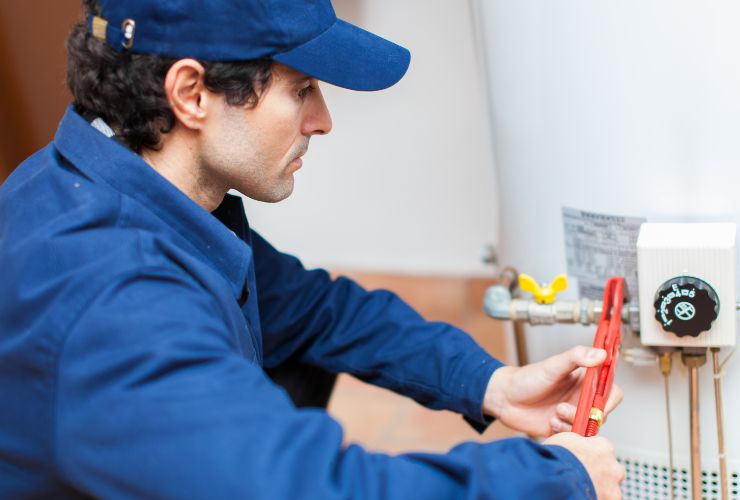
Maintenance and installation process
In many situations, it may be trickier to install a solar hot water system or a heat pump than to replace an electric tank system. However, a skilled installation crew can complete the job in a single day because the installation process is more straightforward because of the frequency with which they undertake this work.
For solar hot water panels to work efficiently, a portion of the roof needs good access to sunlight for solar hot water panels to function. It should face north, northeast, or northwest for the best functionality.
If a thermosiphon system is used, which is the one where the tank also sits on the roof, the roof may occasionally require reinforcing as it must be able to support the substantial weight of the water tank. The installer may charge more for the installation if it is difficult to access the roof space below the system.
